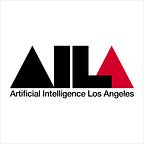AI Earth Summit — Clean Air
Clean air rivals water as the most important element for human life. In my previous article, I articulated how our lives revolve around clean water, and how there are clear and tangible ways we can see the impacts of clean water running out. Air is more difficult. While we can all agree that we cannot live without it, it is harder to quantify the effects of something so universal and nebulous.
Each day, we need air for 23,000 breaths. We are constantly surrounded and filled by it. However, despite our intimate relationship with it, we generally don’t notice subtle — or sometimes overt — changes in the air. Thus, the immediate threat of air pollution poses the risk of going unnoticed.
Air pollution occurs when particles or chemicals — gases, dust, smoke, fumes, and aerosols — enter the atmosphere. These pollutants can occur naturally, but the levels we are seeing now are primarily from “anthropogenic” (human) sources. Higher demands in energy and transportation have led to an increase in the combustion of fossil fuels in the last hundred years. Cars and trucks also play a huge role in this, making up nearly 90 percent of the smog-forming pollution in Southern California, which I will be outlining further in my upcoming article on Sustainable Vehicles (stay tuned!). These emissions are directly linked to the negative changes in our atmospheric composition.
Changes to air quality became famous in the 1940’s when a series of lethal hazes crept over the nation. From Pittsburgh to Los Angeles, clouds of polluted air enveloped cities. Polluted air within LA alone hit an all-time high in the 1960s, with well over 200 days out of the year considered unhealthy to breathe. After these events, research began on the link between health and air pollution.
By the 1970’s the Clean Air Act Amendments were passed by Congress, dawning a new age of progress towards clean air. California was given the ability to set its own standards and rules. This began California’s pioneering mission to reduce air pollutants, which it continues to pursue to this day. Because of this, California’s air saw an upswing in quality over the following decades However, LA’s geographical position works as a natural air pollution trap. A series of fluid dynamic interactions and the surrounding mountains combine with temperature inversions to trap dirty air under the inversion layer over the city of Angels.
Unfortunate geography or not, California prospered in the next 50 years of clean air progress. We even saw links between the improved air quality and an increase in lung function of children. Everything was back on the right track. However, Southern Californians might remember the summer of 2018, known for its sweltering heat waves, record ocean temperatures, and destructive wildfires. Alongside these, another, more subtle disaster took place as well: for nearly three months that summer, not a single day of clean air passed.
Did California’s system fail? Were there just a particularly high number of trucks barreling through that summer? No. Instead, this is one example of the close ties between air pollution and climate change. Climate change not only leads to a direct reduction in air quality, but also changes the behaviors of weather systems in the area, making it hard to predict where the inversion layer will form. Meeting California’s air quality standards becomes even more difficult. Hotter weather from global warming is not addressed in pollution-reduction plans required under the Clean Air Act, even though scientists expect it to hinder efforts to control smog.
As you may guess, air pollution doesn’t just make it harder to see the stars or beautiful horizons. No; as air quality worsens, so does our health. In cities with the highest levels of air pollution, residents have sleeping issues, decreased mental performance, and are at risk for a variety of health issues , including lung disease and cancer (others discussed in the first article of my series). While our day-to-day lives might not currently feel threatened with every breath, air pollution has a compounding effect that will only grow worse without intervention. However, we can intervene. These effects can be mitigated, or even cured, by reducing air pollution. Artificial Intelligence (AI) has the potential to help us identify, track, and solve something that is seemingly universal and intangible. At this month’s AI LA Earth Summit, we will take a closer look at this nearly invisible problem.
Apply for a scholarship: http://earthsummit.la
Techstars Startup Weekend: https://aila-techstars.eventbrite.com
Chloe Grubb is a senior in Robotics at Olin College of Engineering who has focused her time in user-centered (UX) design. She hopes to bridge the gap between engineering and design to create impactful experiences for users. Over the past four years, she has dedicated these skills to addressing the need for increased environmental awareness. Spearheading a Climate Action semester at her school and piloting a start-up, Drina, to allow users to make environmentally conscious decisions highlights her desire to utilize UX design to engage and excite people in the changes that need to happen for environmental stability. Being a contributor to AI Earth Summit is the next step in her environmental action involvement.
